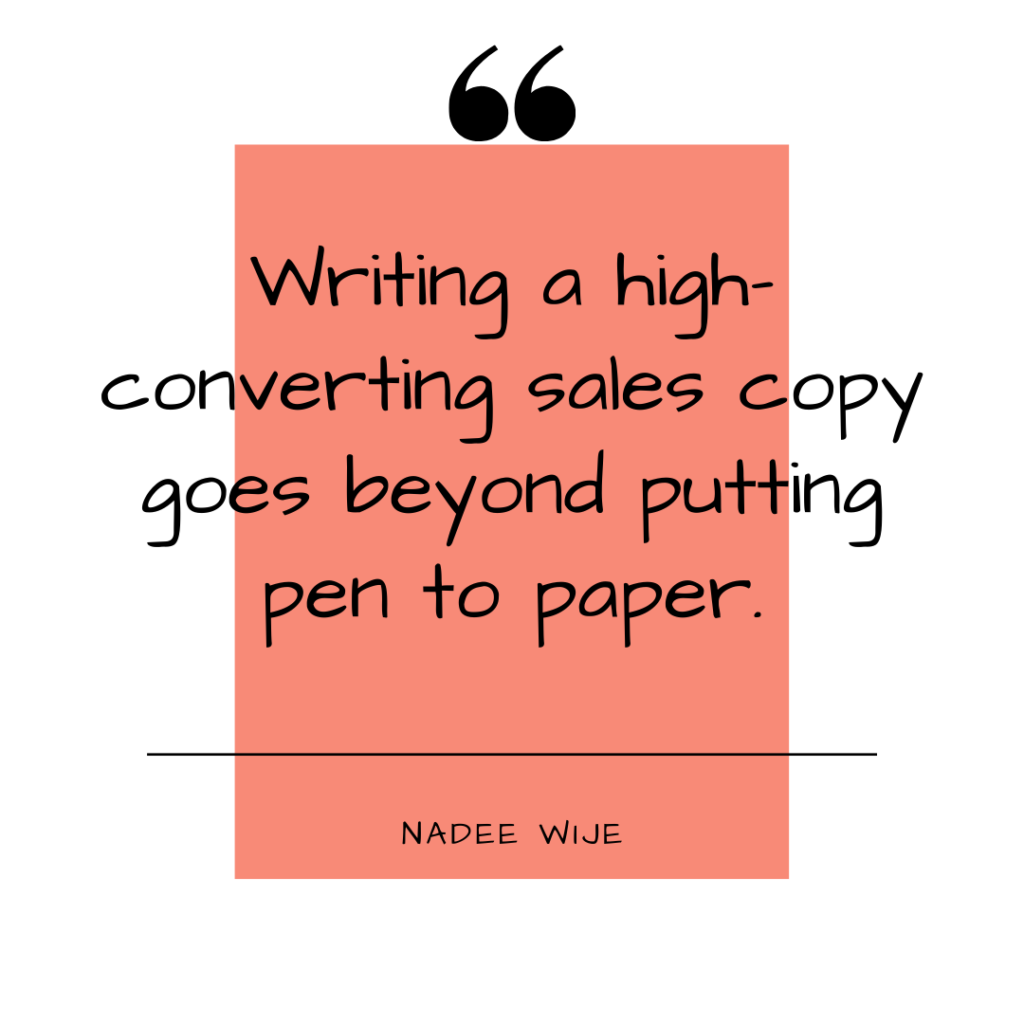
Writing a high-converting sales copy goes beyond putting pen to paper. It involves research, strategic planning, creativity, empathy, and the list goes on.
Understanding human behavior is also very important. But, knowing how to write is trivial.
This post explores what it takes to write a sales copy that converts with a high ROI.
What Is A Sales Copy
A sales copy is a piece of text that persuades people to buy. It could be in the form of a message, a story of transformation, an announcement. It depends on the audience, product/service, and the marketing channel.
In story form, it takes the reader on a journey from where they are now to where they will be after using the product or service.
The journey starts with the problem they’re currently facing, then transitions into what their future will be like with the solution – the product/service.
A sales copy can be a landing page, ad, email, commercial.
Understanding Human Behaviour Is Crucial
Knowing how humans feel, think and act helps with telling a story that people will relate to.
Contrary to what many believe, people make decisions based on emotions then validate with logic.
In Human Behavior: The Complete Pocket Guide, Bryn Farnsworth, Ph.D, illustrates how emotions affect people’s decisions with a simple study by Andrade & Ariely (2009):
… they placed a Quarter (25ct) clearly visible in a phone booth (yes, these things actually existed!) and waited for passers-by to find the coin. An actor working on behalf of the psychologist stepped in, asking to take an urgent phone call. Study participants who actually found the coin were significantly happier, allowing the confederate to take the call, while those who didn’t find the coin were unaffected, and more likely to say no (Isen & Levin, 1972).
From the study, we can see that people are more willing to help when they are happy.
There are several persuasion techniques used in copywriting to influence human behavior, which results in higher conversions.
Note: Persuasion is NOT manipulation.
As expressed by Ralph G. Nichols, Professor Emeritus, in his journal article Manipulation versus Persuasion:
Manipulation is the attainment of compliance based upon illusion, intimidation, or fear. By contrast, persuasion is the attainment of commitment based upon reality of need, discernment and conviction.
Persuasion techniques can be used to both persuade and manipulate, but the intent makes the difference. Persuasion is mutually beneficial but manipulation is not.
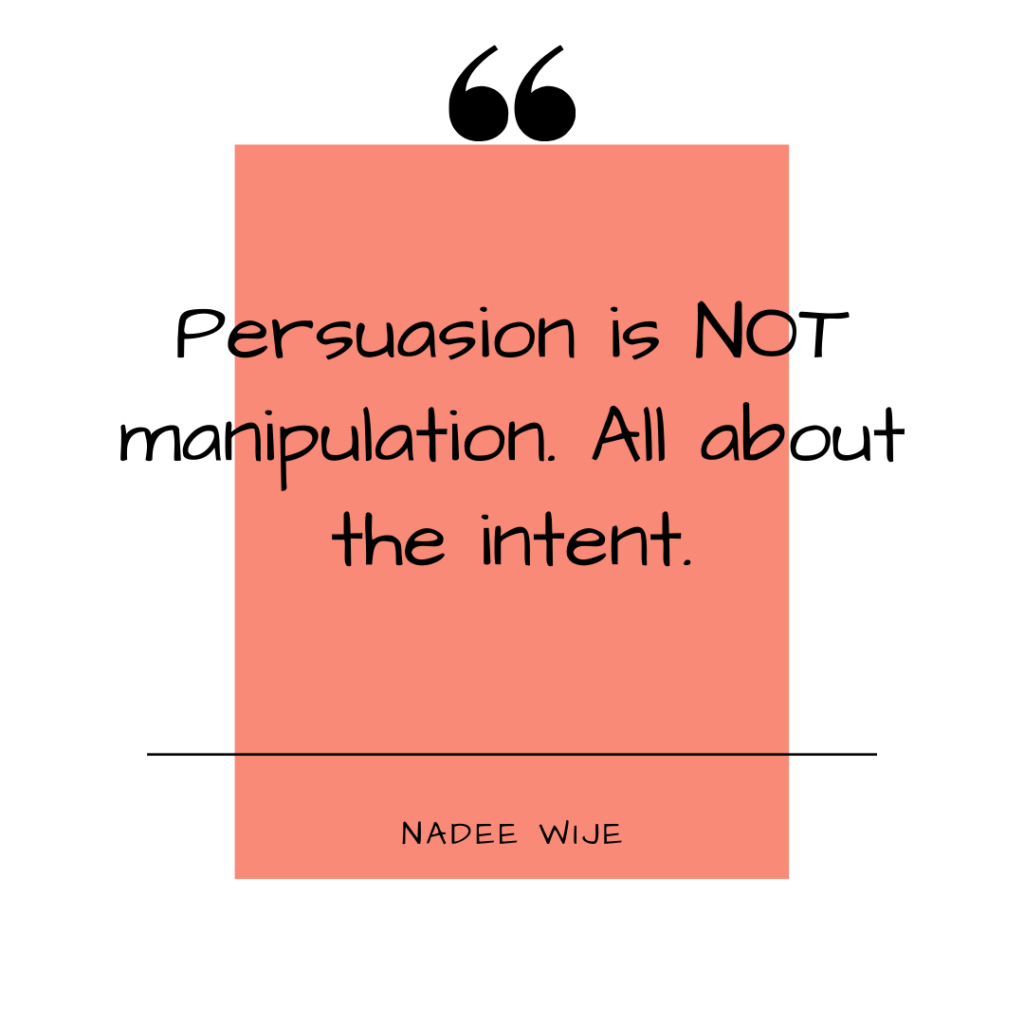
Applying persuasion techniques to write copy involves being considerate and helping the reader realize how the product or service can solve their problems.
That’s why…
It Starts With A Desire
The prospect needs to have a desire for the results of the product or service in the first place.
If there’s no desire for the results, we can’t create one. Trying to create a desire is a waste of time, it simply won’t work. However, we can channel existing desires if it relates to the product/service we’re trying to sell.
Eugene M. Schwartz, a legendary copywriter, emphasizes this concept in his book Breakthrough Advertising:
Copy cannot create desire for a product. It can only take the hopes, dreams, fears and desires that already exist in the hearts of millions of people, and focus those already-existing desires onto a particular product. This is the copy writer’s task: not to create this mass desire —but to channel and direct it.
In other words, it’s all about channeling the desire. Sales copywriting can only exploit the existing desires of the target market.
Josh Kaufman, #1 bestselling business author, mentions the core human desires in his book The Personal MBA. He summarizes it in the blog post Core Human Drives:
1. Drive to Acquire: the desire to collect material and immaterial things, like a car, or influence.
2. Drive to Bond: the desire to be loved and feel valued in our relationships with others.
3. Drive to Learn: the desire to satisfy our curiosity.
4. Drive to Defend: the desire to protect ourselves, our loved ones and our property.
5. Drive to Feel: the desire for emotional experiences like pleasure or excitement.
A sales copy magnifies an existing desire that’s relevant to the product/service by presenting them with the solution they’re looking for.
To accomplish this, we need to do some work before writing copy.
The To-Dos Before Writing A Sales Copy
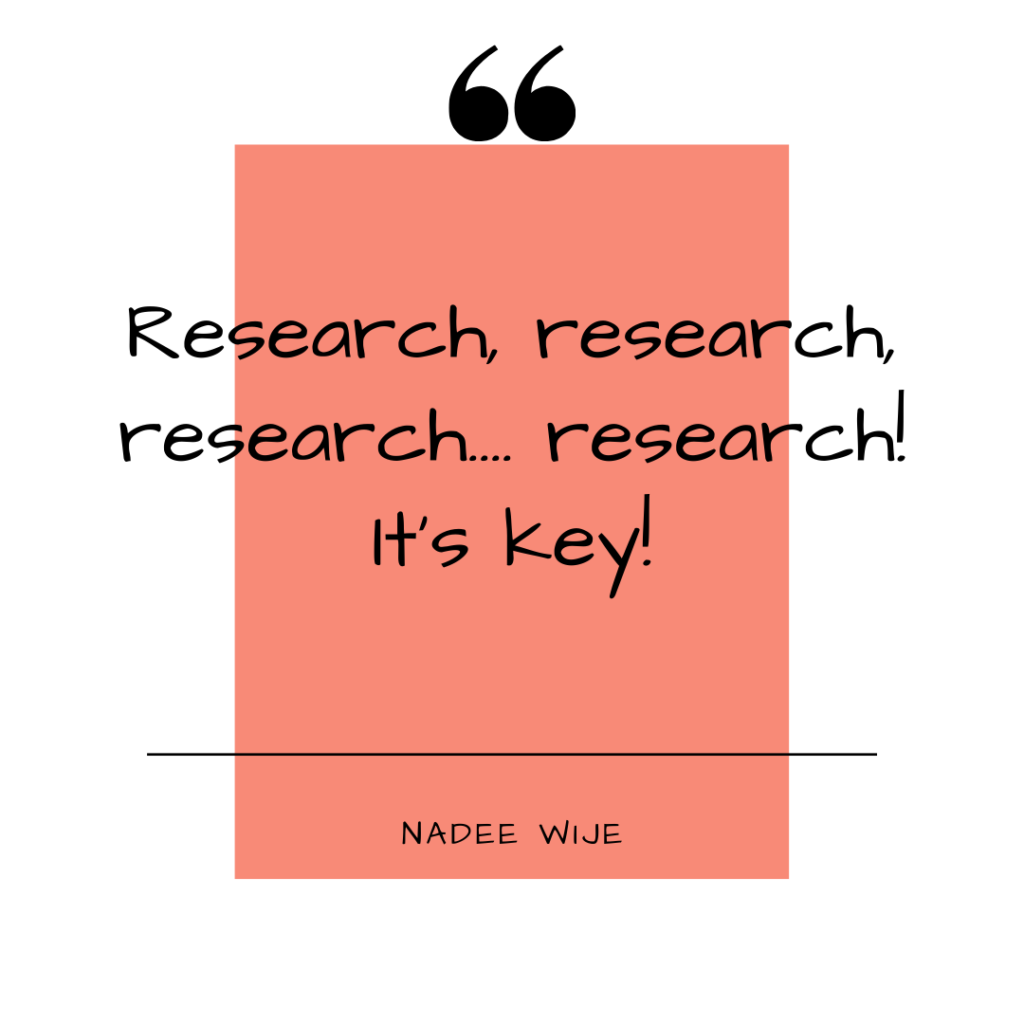
1. Research
Goal: To become familiar with the target audience.
We need to put ourselves in the shoes of the target audience by getting to know them better. What do they care about? What problems do they have? What language do they use? What do they like or dislike about competitors?
2. Identify the USP
Goal: To pinpoint the unique value the target audience cares about.
We need to find out that one big thing that truly matters. What does the product or service offer that no one else does? What is that one thing that sets the product/service apart from competitors’?
3. Derive the benefits
Goal: To focus on the benefits that will captivate prospects.
We need to extract the benefits from the features and highlight them first. Features matter, but prospects mostly care about what they will get out of those features – the benefits. So, we have to highlight the benefits.
4. Determine the length
Goal: To define the scope of the sales copy.
We need to know whether a short-form or long-form sales copy will work best. To do this, we have to consider how aware the audience is, the pricing of the product/service and the nature of the target audience.
5. Outline the structure
Goal: To plan the flow of the sales copy.
Depending on the audience, product/service, and sales copy length, the structure will differ. Copywriting formulas can help, as well as studying what competitors are doing without copying.
The High-Converting Sales Copy Formula
ADIA (Attention, Interest, Desire, Action) is a widely used marketing and advertising model. It’s also a proven copywriting formula that continues to give great results.
The formula is based on the stages prospects move through to make a purchase:
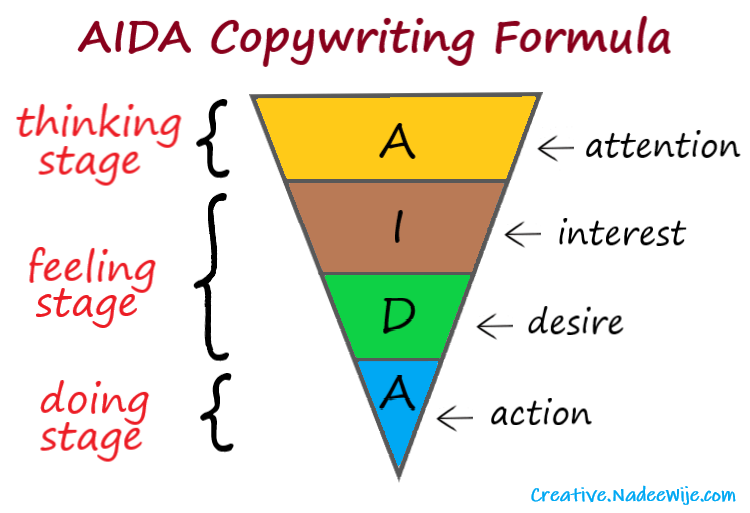
We have to write copy in a way that makes prospects want to read through all stages until they buy.
Attention – The awareness section
Goal: To captivate the target audience.
This is the first part of the sales copy where the reader becomes aware of the product or service. It needs to captivate the target audience and compel them to learn more.

Interest – The engage section
Goal: To educate on the benefits.
After captivating the audience, we have to educate them on the benefits of the product/service. This stage piques their interest, making them consider the product/service as the solution they’re looking for.
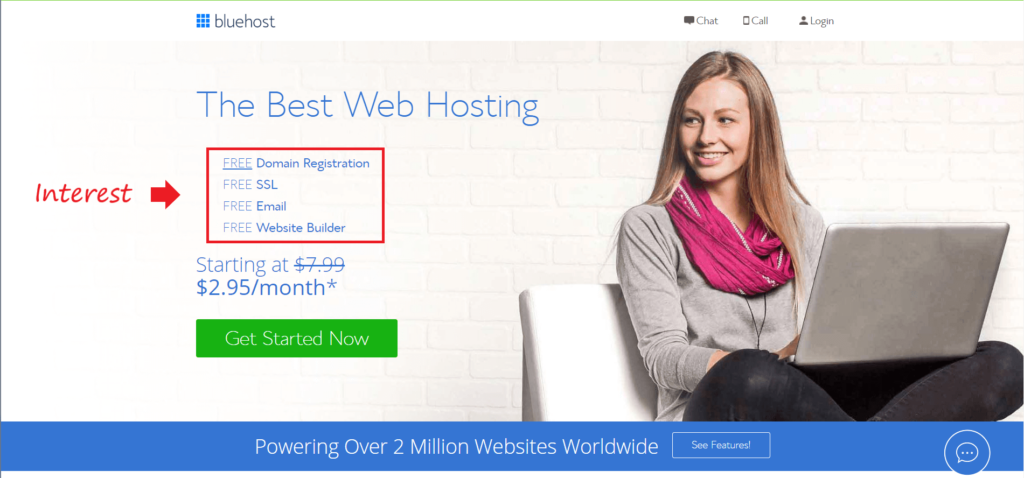
Desire – The inflate section
Goal: To inflate the want.
After piquing their interest, we have to show them proof that it has worked for other people and we strongly believe it’ll work for them. This will lower the barriers, making them more willing to buy.
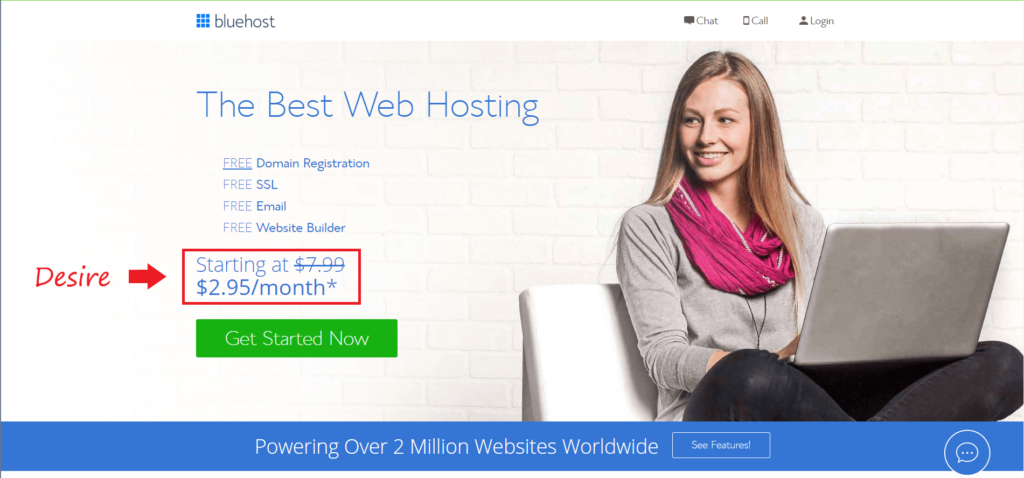
Action – The do section
Goal: To get them to buy.
At this point, their desire is inflated and the barriers are lowered. They have already decided to go ahead, so it’s the perfect time to get them to act. We just have to tell them what to do next and be specific.

We can play around with the flow of AIDA based on the target audience. There are several variations of AIDA like AIDCA (Attention, Interest, Desire, Conviction, Action), IDCA (Interest, Desire, Conviction, Action).
The AIDA flow can also be repeated several times through out a sales copy.
The AIDA formula works for all kinds of sales copy – emails, social media ads, etc. However, it has to be applied knowing what stage the prospect is in; whether they’re already aware of the product and service.
For example, consider product descriptions in an e-commerce store. The prospect is already aware. So we don’t need to create awareness.
Key Elements of High-Converting Sales Copy
To write a high-converting sales copy, we need to include these key elements based on relevance.
1. Benefit-focused headlines and sub-headlines.
People usually skim through a sales copy first. The headlines and sub-headlines stand out, so we need to captivate them by highlighting the benefits. If the headlines fascinate them, they will read further.

2. Benefits before features.
People don’t care much about the features at first. What they will get out of the product/service is what makes them want to learn more. So, we need to mention the benefits first before presenting the features.

3. Testimonials or Social Proof.
People want to know whether they can trust the product or service. When they see others buying with promising results, they feel safer buying. People also like to follow the crowd and do what others are doing.
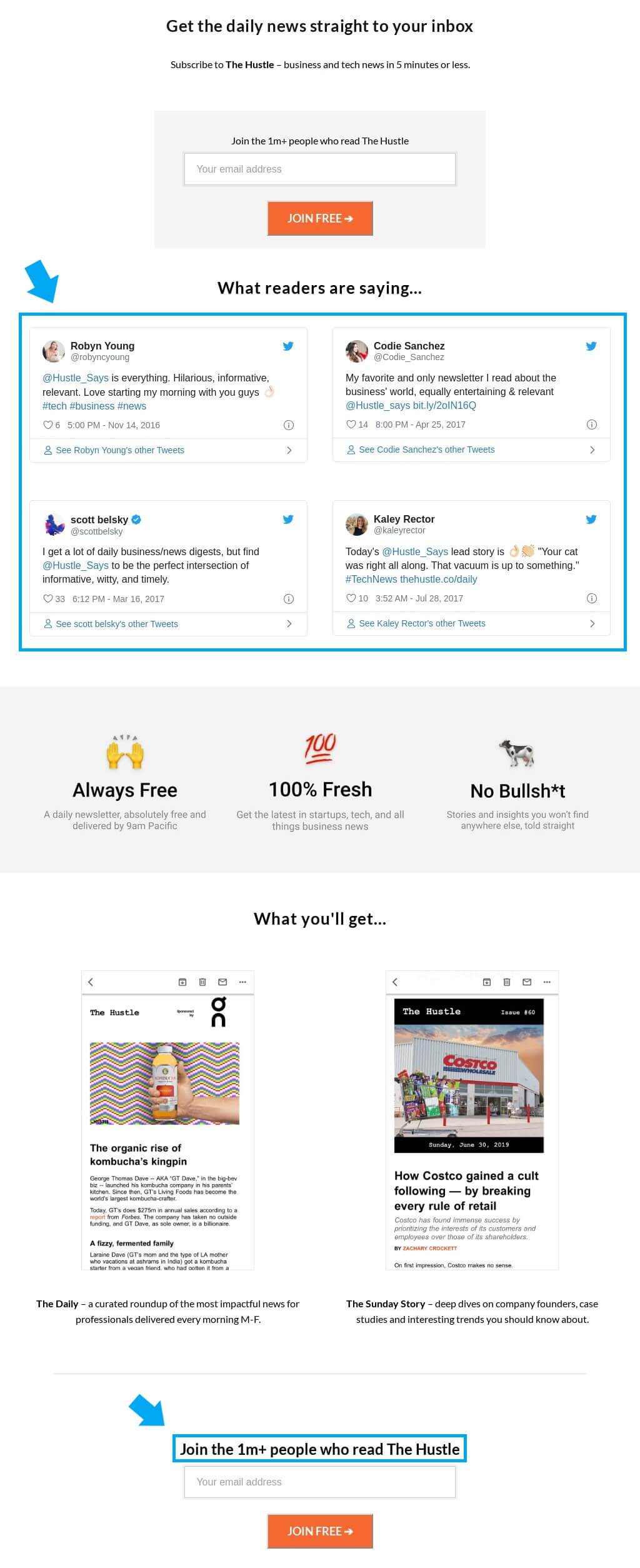
4. Pricing with decoy effect
When people have to choose between two options, they will most likely opt for the cheaper option. However, with an unattractive third option, people are more likely to go with the second option. This is the decoy effect.

5. Guarantee
A guarantee builds trust in the product or service. It tells the prospect that we are 100% certain that the offering will solve their problem. This lowers the barrier to purchase, making them more willing to buy.
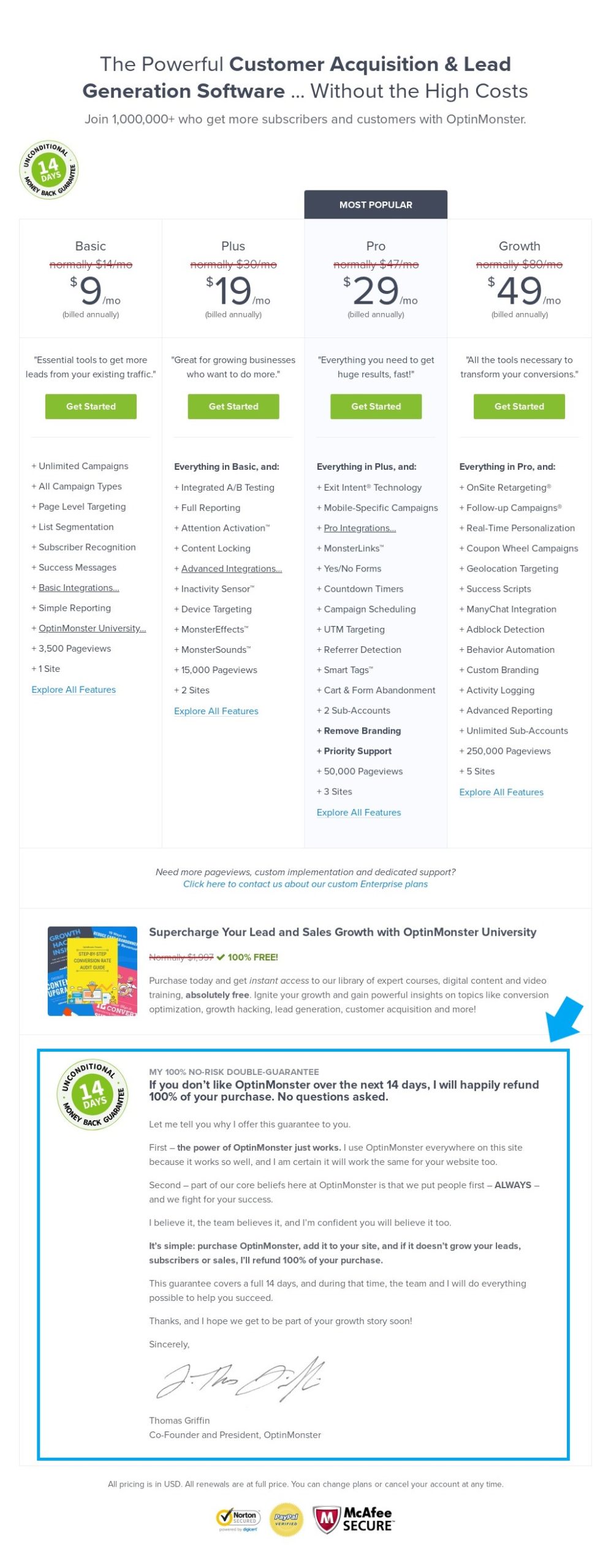
6. Offer + Time limit
Offers are tempting, they encourage people to spend more. Time limits create a sense of urgency with the fear of missing out. So, time-limited offers make people more willing to buy sooner.
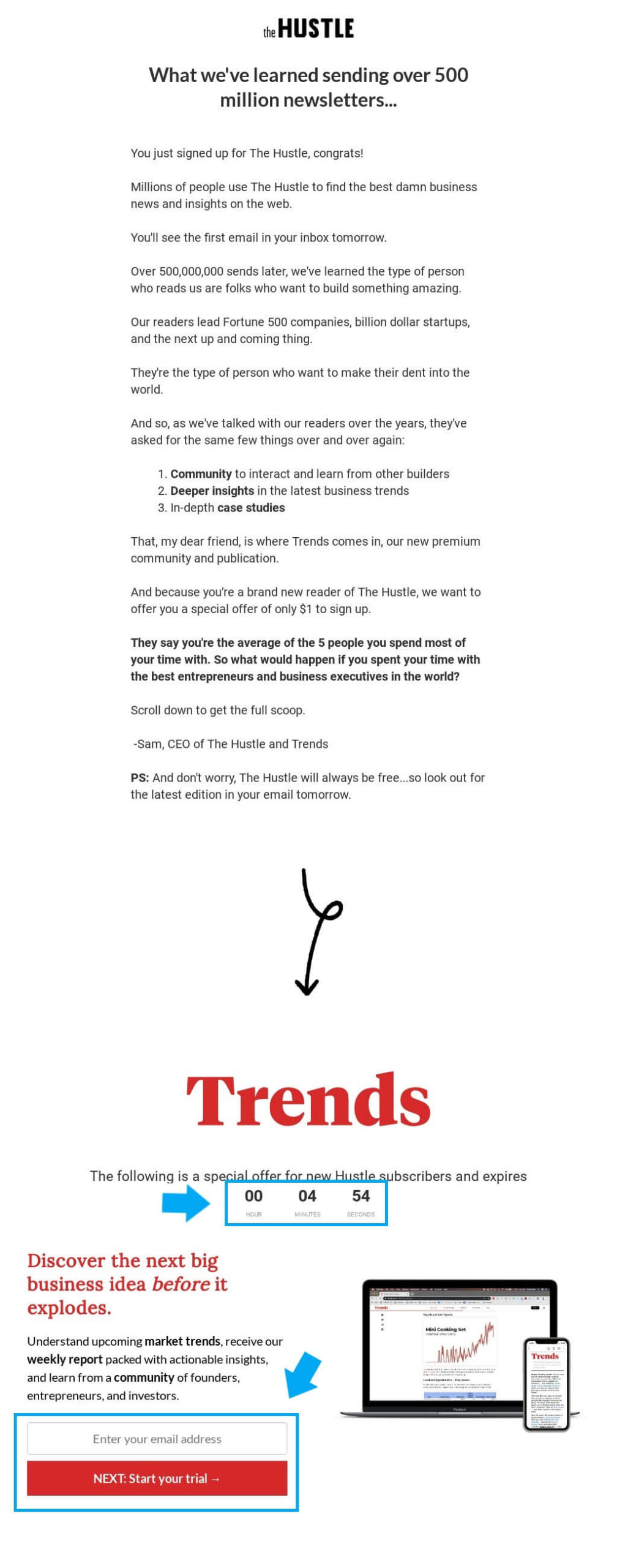
7. Multiple Call-to-Actions
For long-form sales copy, it’s best to repeat the call-to-action in key sections. This saves readers the hassle of having to scroll all the way down to buy. It makes it easier for prospects to buy at whatever stage they become ready.

Summing Up…
For a high-converting sales copy:
- Research, research, research.
- Understand human psychology.
- Channel a relevant already-existing desire.
- Highlight the benefits first.
- Use AIDA.
And remember, the prospect is the hero of the sales copy. It’s all about them.